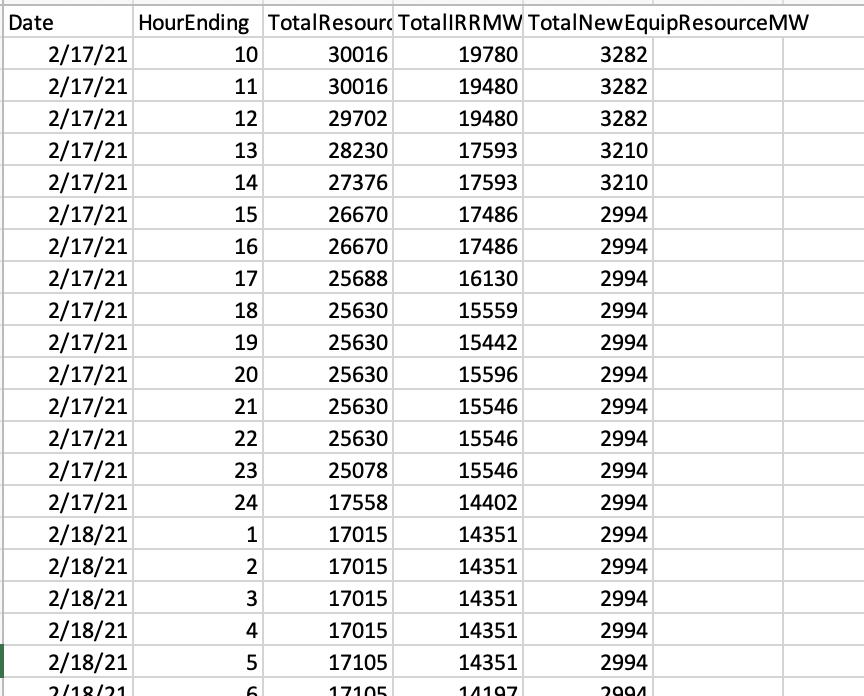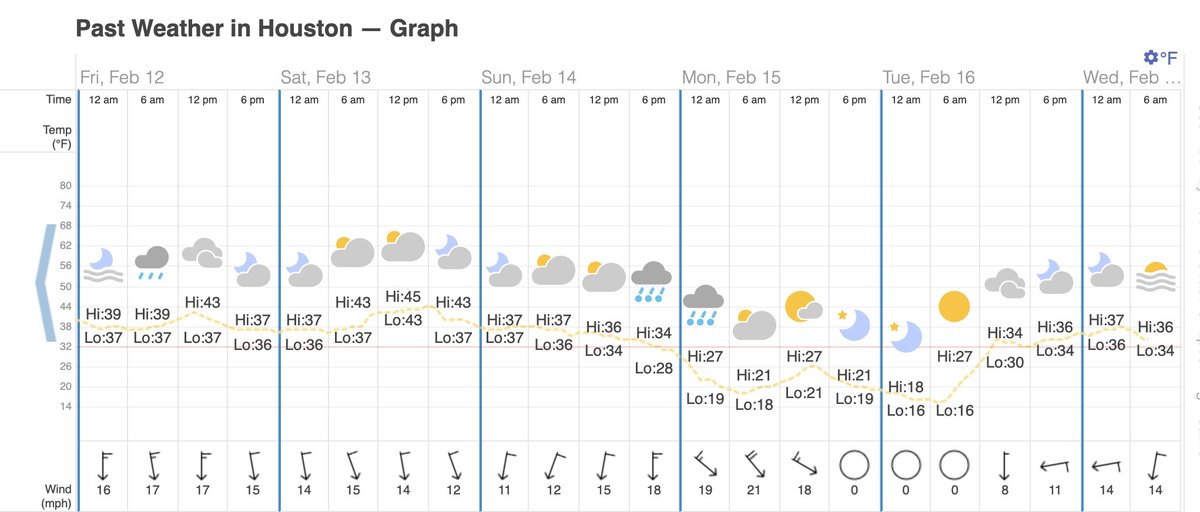
Wow, this graphic from a new @ERCOT_ISO report on the #TexasBlackouts shows how close the ERCOT grid was to a cascading failure that could have easily blacked out the whole system. ercot.com/content/wcm/ke… 1/ 

Going into the night of Valentine's Day, February 14th, a new winter peak demand of 69,222 MW was set at 7:06pm. By 1:23am in the middle of the night on February 15th, frigid temps had left more than 35,000 MW of generating capacity offline. 2/ 



Faced with greater demand & diminished generation capacity, ERCOT, the grid operator, ordered transmission utilities to start disconnecting millions of customers. The initial order was to shed 10,500 MW of demand. This grew to a height of 20,000 MW by the end of Feb 15th. 3/ 

ERCOT, like all grid operators, must balance supply and demand for electricity at all times, within very tight physical tolerance ranges. If demand exceeds supply, generators strain to meet the greater load and the frequency of the alternating current power system drops. 4/ 

If sensors at generators detect a decline in frequency of more than one percent for more than a few minutes, power plants automatically disconnect to avoid damaging overworked generators. 6/ 

As one overworked generator shuts off, it places more strain on the remaining generators, triggering more power plants to trip off, and so on, in a cascade of failures that can blackout the entire system. 7/
A grid operator’s primary job is to avoid this outcome. On February 15, ERCOT was thus faced with no other option but to start emergency blackouts to shed demand and restore balance with the vastly diminished supply. 8/
This new 'after action' report shows that the frequency of the TX grid dropped to a low of 59.4 Hz for 4 mins & 23 seconds. That sounds minor, but as ERCOT explains, more generators would have automatically dropped offline if the frequency had stayed below 49.4 MW for 9 mins+. 9/ 

This illustrates just how delicate the balancing act is that electricity system operators maintain at all times. The #TexasBlackouts were minutes from being far worse.
(None of which diminishes how devastating & often deadly the days' long blackouts were for all affected) /End
(None of which diminishes how devastating & often deadly the days' long blackouts were for all affected) /End
p.s. This chart shows how rapid failure of ~9,000 MW of natural gas plants along with ~2,000 MW of wind just after midnight 2/15 appear to have precipitated the initial frequency drop. >15,000 MW of gas generators eventually went offline + 1,300 MW of nuclear & ~2,000 MW of coal. 

Sorry, typo above here
Should say "more generators would have automatically dropped offline if the frequency had stayed below 59.4 Hz for 9 mins+" (Not 49.4 MW!) Blerg.
https://twitter.com/JesseJenkins/status/1364795429397925888
Should say "more generators would have automatically dropped offline if the frequency had stayed below 59.4 Hz for 9 mins+" (Not 49.4 MW!) Blerg.
• • •
Missing some Tweet in this thread? You can try to
force a refresh






